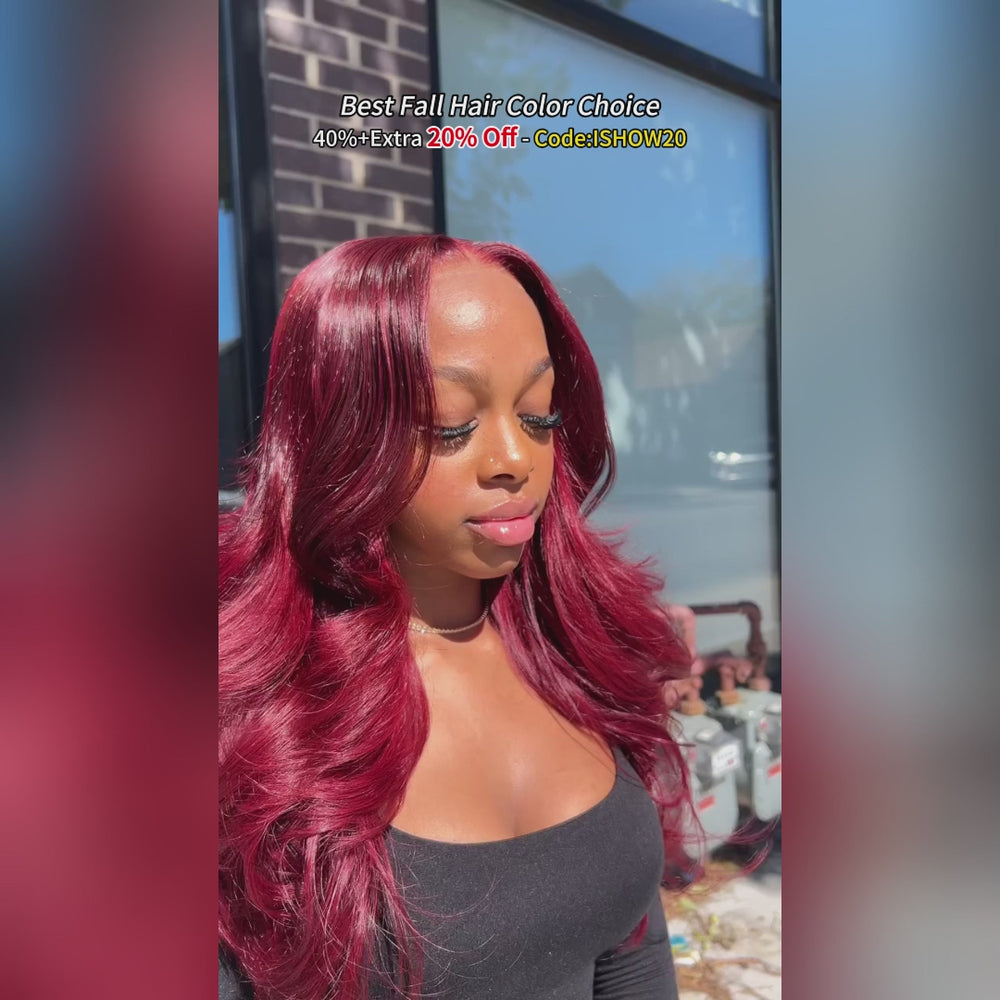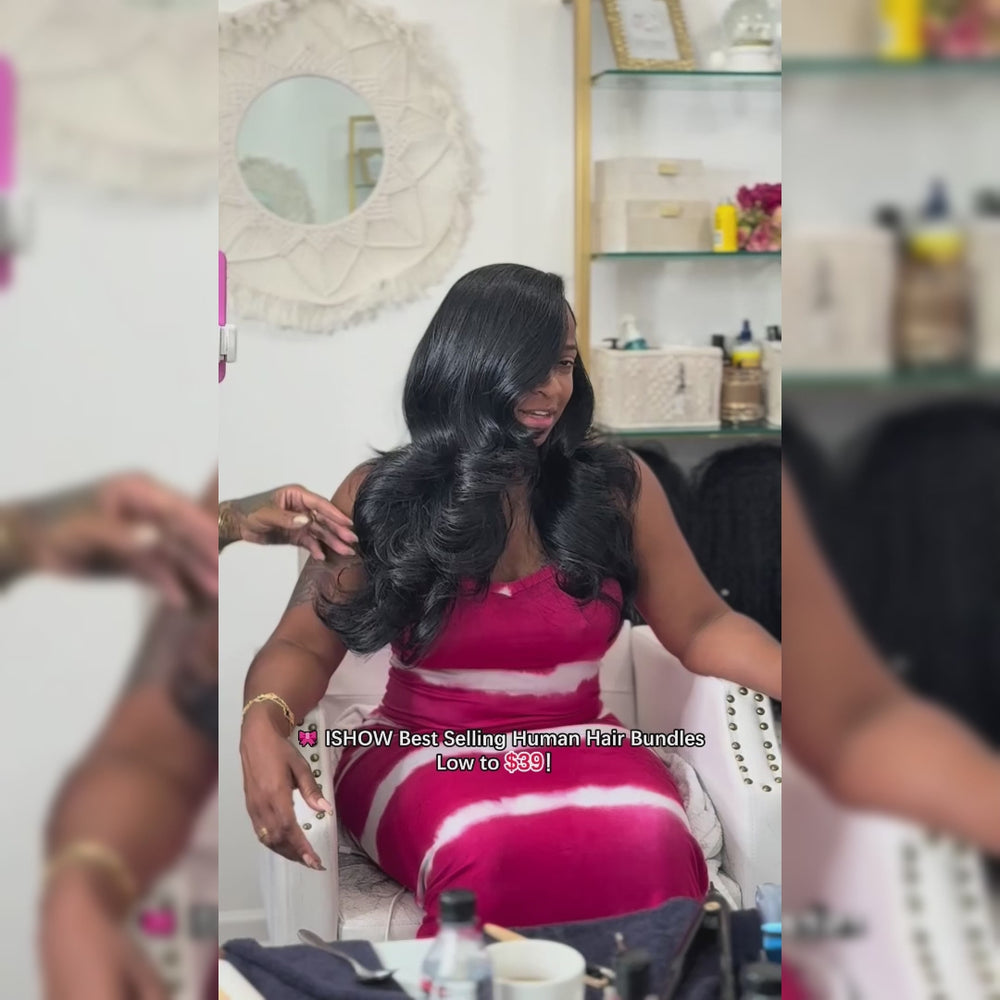Something You Need to Know About Wig Density
Have you ever wondered what makes a wig look so incredibly natural and lifelike? The secret lies in its density! Wig density plays a crucial role in achieving that coveted realistic appearance we all strive for. In this blog post, we'll dive into the world of wig density, exploring what it is, why it matters, and how to choose the perfect density for your unique style.

Understanding Wig Density
So, what exactly is wig density? In simple terms, it refers to the amount of hair fibers attached to the wig cap. The more fibers per square inch, the higher the density. Wig density is typically measured in percentages, ranging from around 60% to 250% or more.
Generally, wig densities are categorized into three main levels:
- Low Density (60-100%): Light and airy, perfect for a natural everyday look.
- Medium Density (120-150%): Versatile and suitable for various styles and occasions.
- High Density (180-250%+): Full, voluminous, and ideal for creating glamorous, statement-making looks.
In simple terms, the wig density refers to how much hair is packed onto the wig cap. Higher density means more hair fibers, which leads to a fuller, thicker wig.
Why Wig Density Matters
Wig density is an important factor to think about because it can really change the entire look and feel of the wig. Higher density wigs simply look more lush, full and natural - the abundance of fibers creates gorgeous body, bounce and movement reminiscent of thick, healthy hair.
Lower density wigs, on the other hand, can be a bit too sheer and sparse, exposing more of the wig cap and falling flat. More hair fibers in a higher density wig provide better coverage across the cap for a seamless, flawless appearance along the hairline and part. Greater density also boosts durability over time with proper care, as there are more strands to retain volume and minimize the need for frequent trims.
Styling versatility is enhanced as well - with a wealth of fibers, high density wigs can be pulled into updos or sculpted into tight curls without revealing clips, bands or cap exposure. Overall, density is a make-or-break detail that impacts the wig's styling potential, realism and longevity.
The Impact of Wig Density on Appearance
Low-Density Wigs
If you're aiming for a light, natural, and effortless look, low-density wigs are your go-to choice. They mimic the appearance of fine or thinning hair, making them perfect for everyday wear or those with more delicate features.
Medium-Density Wigs
For those who crave versatility, medium-density wigs are a fantastic option. They provide enough volume and fullness to create a variety of styles, from sleek and straight to bouncy curls. Medium density is suitable for most occasions and complements a wide range of facial features.
High-Density Wigs
When you want to make a bold statement or channel your inner diva, high-density wigs are the way to go. These wigs offer maximum volume and fullness, allowing you to create show-stopping, glamorous looks. They're perfect for special events, photo shoots, or whenever you want to exude confidence and style.
Choosing the Appropriate Wig Density
Deciding on the best wig density depends on individual preferences, needs, and hair type. Here are some tips for choosing the right wig density:
-
Match Natural Hair Thickness: Select a density similar to the fullness of your natural hair. For fine hair, a light or medium density will look more realistic.
-
Consider Planned Hairstyles: Do you plan to wear the straight wig or curly wig? Curly wigs require higher density to hold the texture when styled.
-
Analyze Lifestyle Factors: Higher density wigs create more volume and require more styling. If leading an active lifestyle, a lighter density might be better.
-
Check the Cap Size: Higher densities work best with smaller cap sizes like petite or average. Large caps with high density may look overdone.
The ideal density is a personal choice that varies for each individual. Focus on how you want the wig to look and fit into your lifestyle.

Techniques for Increasing Wig Density
Don't despair if your wig's density appears too thin and sparse - there are easy tricks to make it look naturally thicker::
-
Backcombing: Gently backcomb sections to add volume at the roots. Avoid damage from aggressive backcombing.
-
Clip-In Hair Extensions: Blend extensions matching the wig’s color and texture for extra fullness. Focus on the top for lift.
-
Lace Front Trimming: Carefully trim the lace front closer to the hairs so the hairline density increases.
-
Curling: Styling in bouncy curls or waves will instantly increase overall fullness.
-
Volumizing Products: Use specialized sprays, mousses and powders to temporarily thicken density.
With strategic styling and customization, lower density wigs can achieve increased volume and fullness.
Measuring Your Wig's Density
If you want to get technical, you can actually measure the hair density of a wig you already own:
What You Need:
- Wig head or styrofoam wig stand
- Ruler or measuring tape
- Paper and pen
Steps to Measure Wig Density:
- Place the wig on a stand and ensure the fibers are untangled.
- Use a ruler to measure 1 square inch near the crown. Only measure hair fibers.
- Carefully count the hairs within the 1 square inch section. Sample multiple areas.
- Record the number of strands per square inch. Repeat for accuracy.
- Calculate the average number of hairs for the sections.
- Compare to a wig density chart. Most human hair wigs range from 80-200 hairs per inch.
This hands-on method provides an accurate number for your wig’s density. It takes patience but helps match replacement wig density.
Caring for High Density Wigs
High density wigs require additional care to keep the hair lush and full:
- Detangle gently from ends up with a wide-tooth comb to prevent breakage.
- Wash less frequently, around once every 2-4 weeks, to avoid frizz.
- Use moisturizing, sulfate-free shampoo and conditioner made for wigs.
- Allow wig to fully air dry to prevent matting and tangling.
- Use heat protectant sprays before hot tool styling to reduce damage.
- Trim ends occasionally to maintain thickness and reduce tangles.
- Avoid excessive pulling, brushing or handling that can loosen density over time.
With extra care, higher density wigs will retain volume, minimize tangling, and extend the wig’s lifespan.
Achieving the Perfect Wig Density Balance
Determining ideal wig density involves blending personal preferences, lifestyle, hair type and styling needs. As discussed, the density dramatically impacts the wig's look, realism and versatility. With this extensive information on evaluating and measuring density, wig wearers can select the perfect thickness and fullness for their unique needs and achieve beautiful, natural results.











